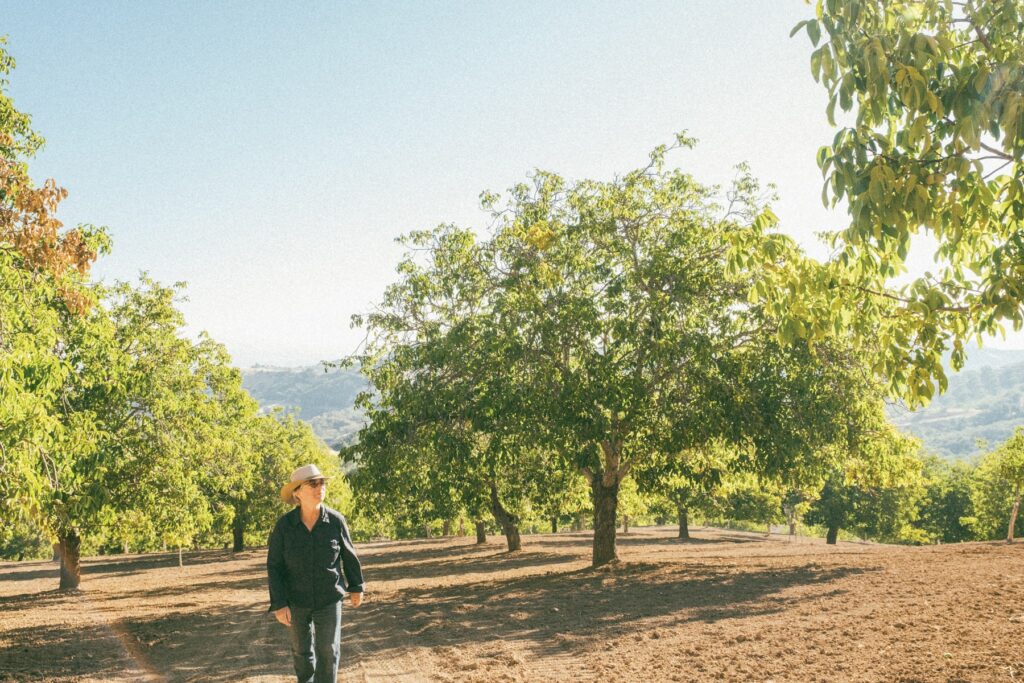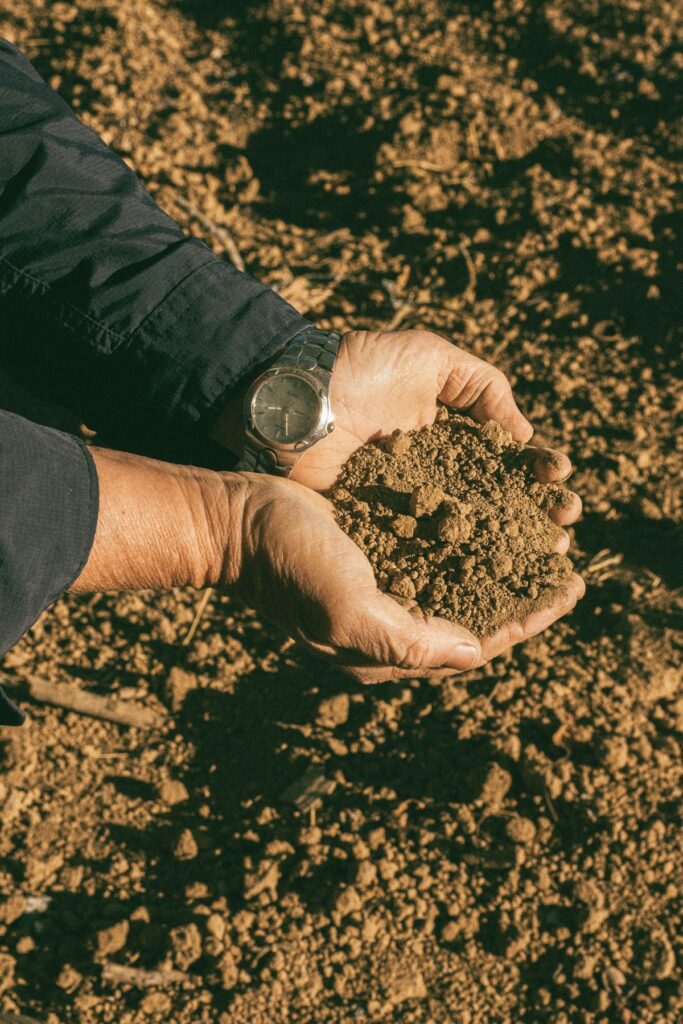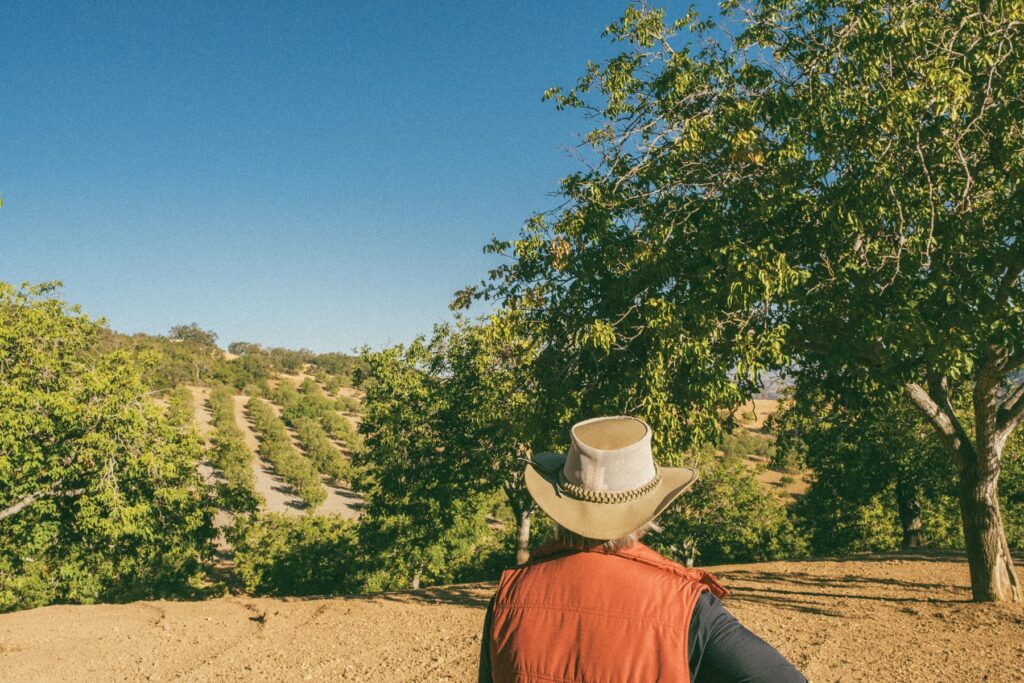
Dry Farming on the Central Coast
Story by Zoe Elliot Shaw
Photography by Richard Fusillo
The ongoing threat of drought in California leaves residents and farmers faced with reducing their water usage and finding creative ways to keep their plants alive. Thus, “farmers globally are exploring adopting dry farming methods as a climate resilience strategy to cope with less water available for irrigation,” notes the Dry Farming Institute. One of those farmers is walnut grower Jutta Thoerner, Owner of Manzanita Manor Organics in Paso Robles.

“After the rain, my orchard looks like a different place. It’s a wonderland, all green and full of life compared to the dust field that appears by mid-summer,” says Jutta. “The nutrients from the cover crops are incorporated back into the soil in the spring. We dig out the plant, use a ring roller and create a thick dust mulch layer. It’s essential to capture and protect the moisture under the soil.”

This technique is finding new use amid the climate chaos but the practice itself has a rich history among desert farmers and Indigenous people. Only 50 years ago, dry farming was prominent in many successful family farms in California. With less competition to aggressively develop the land, maximize crop yield and strip the soil, previous generations effectively dry farmed their vineyards and orchards.
In contrast, commercial crops are planted densely in rows, which allow for little biodiversity, and in soil that’s not suitable for dry farming, creating a reliance on constant irrigation. Plants need adequate spacing so each tree or vine can establish a root structure and extract from the soil what it requires to thrive. Sandy soil can make dry farming ineffective, as a layer of dust mulch is required to create an environment for developing strong rootstock; the sandy texture doesn’t allow for much layering. If the soil is well suited and worked early on, it eventually develops a sponge-like quality, enhancing growing seasons ahead. The plants send roots down deep in search of water while becoming resilient and taking on more character over time.
“There are many rootstock varieties that do well, so find those and start with tomatoes or melons,” Jutta, who is also a trained master gardener, instructs. “Simulate the heavy rain in winter. Even if we don’t have it, space your plants and mulch heavily. I mean 2–3 feet of thick coverage. Stick your arm down there after a few months and feel how much cooler it is even without water. It’s an education!”
Dry farming is a lower-yield process, but it cultivates the soil and the crop creates terroir, which improves the flavor and quality of the nut or fruit of the orchard or vineyard. The fruit may be firmer in texture, store longer, taste better and take on a more concentrated flavor. Soil science plays a significant role in the success of dry farming and farmers must tend to the topsoil, flattening it to protect the roots and prevent moisture from evaporating. California’s coastal regions are well suited to this practice thanks to some reliable winter rainfall, especially in the north, but also because the marine layer helps trap water in the soil.
Farmers, vignerons and avid gardeners who explore dry farming are afforded a creative opportunity when establishing crop varieties. For example, one variety of almonds may exhibit resistance to drought with powerful rootstock, while another varietal might produce early and abundantly. Together, this could become a hybrid plant more favorable to dry farming.
Statistics regarding the shocking amount of water guzzled by the California almond industry can turn that Costco-sized tub of almonds in the pantry into a personal dilemma. The truth is, it’s not just almonds; it’s large-scale mono-cropping and the consequences of climate change shrinking the ground and depleting the soil.

This threat is why Alice Anderson, Owner of Âmevive in Los Olivos, practices dry farming. Her goal since leasing and farming the Ibarra-Young Vineyard property in early 2020 has been to create a “closed vineyard system,” meaning all nutrients and organic matter material are recycled back into the soil where the vine grew. Creating a healthy ecology microbiome in the soil is the foundation of successful dry farming. “Everything that lives here wants to live here, from the little bugs that eat the mildew to the larger ones, the owls, ducks and sheep. All these elements lend themselves to the biology under the soil.” She aims to use as little irrigation as possible and no tilling, creating a carbon-rich biosphere of microbes and fungi. These practices develop water holding components and help create a stable root structure. In 2020, Âmevive harvested only a ton of fruit per acre and with a little more experience in 2021, they brought in 1.8 tons per acre. Now another promising vintage is in barrel.
These days, every square inch of Âmevive is planted with cover crop. Squash vines shade the soil while fruit trees and other resistant plants provide food for the biosphere. Alice reports she’s had some success dry farming watermelons, tomatoes, sunflowers and Thai peppers. Her recommendations for dry farm gardening success are: “A good soak is rare but necessary, as it’s similar to normal rain for the region. Use compost teas to aerate and help sandy soils retain water and nutrients, oh, and watch out for earwigs!”
Another way to succeed with dry farming, according to Jutta, is to welcome the natural environment. “We don’t use deer fencing like most farms and vineyards, so we experience an array of animal visitors: wild turkeys, wild pigs, bears, bobcats,” she shares. “We have to live together. They contribute to the microbiome and this enhances our soil.”
Dry farming won’t be an option everywhere or for every crop, but Jutta and Alice see and taste the results of their environmental stewardship with each harvest.


